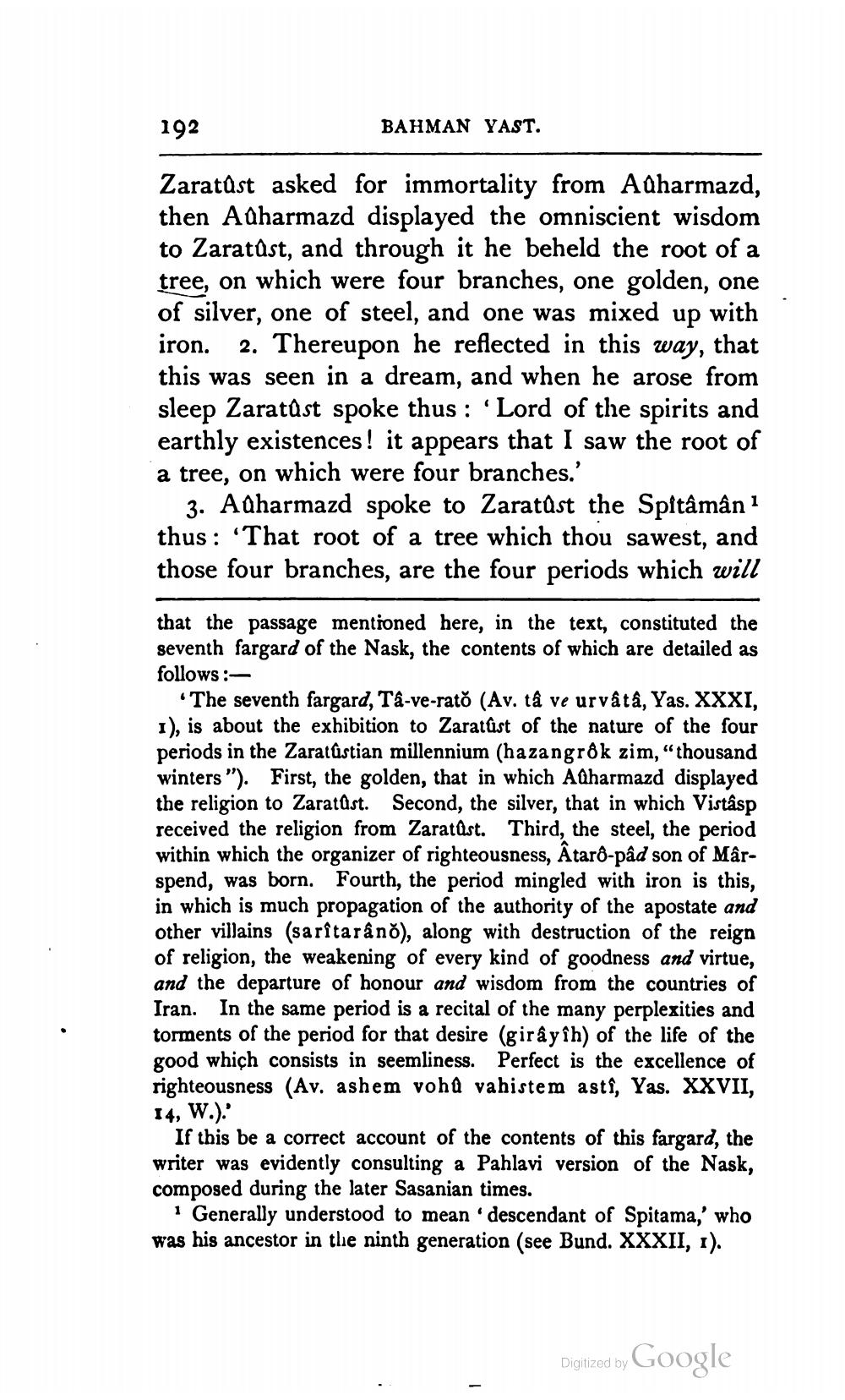________________
192
BAHMAN YAST.
Zaratust asked for immortality from Aûharmazd, then Aûharmazd displayed the omniscient wisdom to Zaratust, and through it he beheld the root of a tree, on which were four branches, one golden, one of silver, one of steel, and one was mixed up with iron. 2. Thereupon he reflected in this way, that this was seen in a dream, and when he arose from sleep Zaratust spoke thus: 'Lord of the spirits and earthly existences! it appears that I saw the root of a tree, on which were four branches.'
3. Aûharmazd spoke to Zaratust the Spitâmân1 thus: 'That root of a tree which thou sawest, and those four branches, are the four periods which will
that the passage mentioned here, in the text, constituted the seventh fargard of the Nask, the contents of which are detailed as follows:
'The seventh fargard, Tâ-ve-rato (Av. tâ ve urvâtâ, Yas. XXXI, 1), is about the exhibition to Zaratust of the nature of the four periods in the Zaratûstian millennium (hazangrôk zim, "thousand winters"). First, the golden, that in which Aûharmazd displayed the religion to Zaratust. Second, the silver, that in which Vistâsp received the religion from Zaratust. Third, the steel, the period within which the organizer of righteousness, Âtarô-pâd son of Mârspend, was born. Fourth, the period mingled with iron is this, in which is much propagation of the authority of the apostate and other villains (sarîtarâno), along with destruction of the reign of religion, the weakening of every kind of goodness and virtue, and the departure of honour and wisdom from the countries of Iran. In the same period is a recital of the many perplexities and torments of the period for that desire (girâyîh) of the life of the good which consists in seemliness. Perfect is the excellence of righteousness (Av. ashem voha vahistem asti, Yas. XXVII, 14, W.).'
If this be a correct account of the contents of this fargard, the writer was evidently consulting a Pahlavi version of the Nask, composed during the later Sasanian times.
1 Generally understood to mean 'descendant of Spitama,' who was his ancestor in the ninth generation (see Bund. XXXII, 1).
Digitized by
Google




